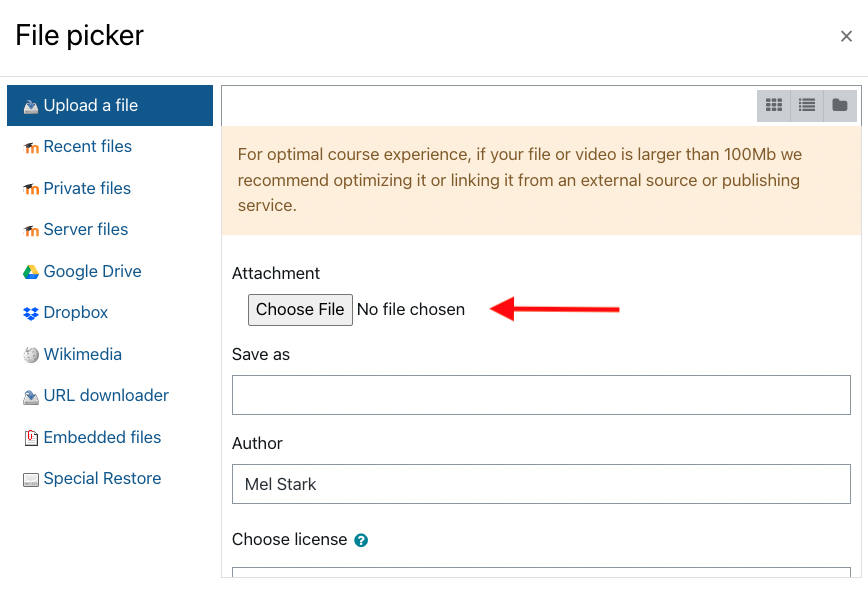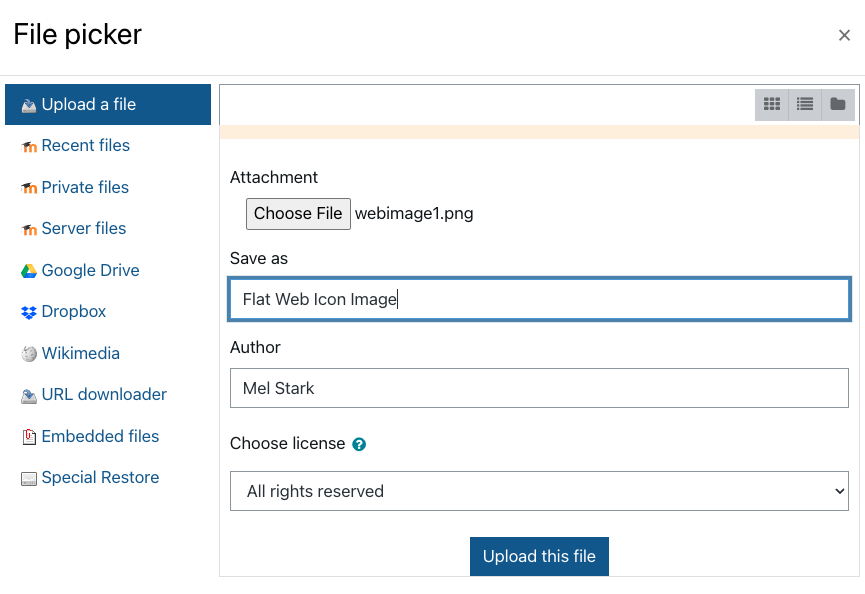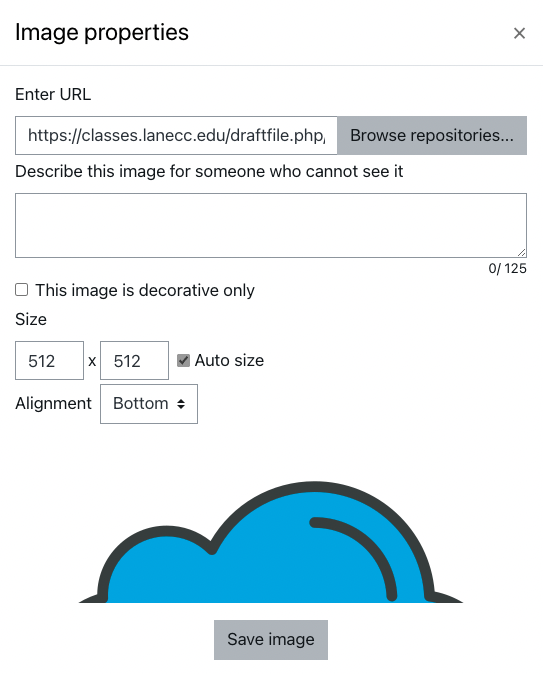Activity Challenge: I am the Master of Images!
Description
In this 20-minute activity, you will learn the importance of using images in online learning, learn how to choose appropriate images and master the technical aspects of using images in Moodle to make it inclusive for all learners.
What you need
- Access to a Moodle course with edit privileges
- Be able to access a web browser to search for images (optional)
Enhancing Engagement with Images
There are many reasons images can play a crucial role in online learning. Images can enhance engagement and retention when their use is relevant and can pique interest among learners. They can help illustrate and reinforce key concepts. Images can also facilitate understanding by simplifying concepts or ideas, making them easier to understand, and making connections between different pieces of information. Images can accommodate different learning styles and can be particularly beneficial for visual learners who understand information better when presented in a visual format. Images can be used to make online learning materials more accessible to people with disabilities. For example, alt text can be used to describe images for visually impaired learners. Lastly, images can make a lasting impression on learners and can be easier to remember than text alone. This can be particularly useful for recalling information when taking tests or exams.
The importance of choosing appropriate images for online learning is key to giving your students a way to connect and feel included when they engage in your assignments. Consider factors such as age, culture, and diversity when choosing images. This goes a long way. It is also important to use size-appropriate images and choose the type of image files (JPEG, PNG, etc.).
Overall, incorporating images into online learning can improve engagement, understanding, accessibility, and retention, making for a more effective learning experience.
Image Types and Alternative Text
There are many types of images that are used, from simple to complex. In this challenge, we will cover the most likely scenarios an image would be used. However, you can find more information on Simple and Complex Images by reviewing the accessibility information on the IDS Accessibility website.The two most common types of images are informative and decorative.
- Informative: Graphically represents concepts and information. These types of images require a short description called alternative text. This short description is roughly 125 characters or less which needs to convey the information in the image.
- Decorative: The image used is strictly decorative and does not connect to the content where a description is necessary. In this case, no alternative text is required.
Rules to follow with Alternative Text
- Add alt text to all non-descriptive images.
- Keep it short and descriptive, like a tweet.
- Do not include "image of" or "photo of"
- Mark the image decorative if the software you are using allows it.
Instructions
Before you begin, either have images within a Moodle course you want to use or have images on your desktop you can upload for this exercise.
- Navigate to your Moodle course.
- Have one to three images to use in this activity.
Activity
- In your Moodle course, create a new page by clicking the "Add an activity or resource" button and selecting "Page" from the resource list.
- Give your page a title and if you want, you can add some introductory text.
- Upload your images to your Moodle page by clicking the "Insert or Edit Image" button.

- An image property window pops up. Click "Browser Repositories".

- In the new window, click "Choose File" to navigate to the location on your computer where your images are.

- After you select your image, you can add some additional information.
- You can update the name of the file in the "Save As" text box.
- Author: If you do not own the image, this is where you would indicate who the author is.
- Choose License: Select what licensing is attached to the image. It is always a best practice to use images that are copyright free or creative commons.

- The image properties box comes back into view.

- If this is a decorative image that is not relevant to the content you are creating, then check the decorative image check box.
- If this image connects to the content you are creating, then write a description of the image in the text box provided.
- You can also decide the size of the image before saving it.
- Once you are finished inputting your information and parameters, click "Save Image"
- Your image will populate on your page.
Adding Alt Text to Existing Images
If you already have images in your Moodle course that you have not added alt text to, it is still possible to do that.- Click on the image you need to add a description to. It will highlight.
- Then click the "Add or Edit Image" button.
- The Image Properties box pops up. In the "Alternative text" field add your description.
- The "Save Image"
When you add Images
- Review and make sure that you have applied the technical aspects (copyright/CC, image sizes, alt text).
- Check that the images are appropriate for your audience and that they are licensed under Creative Commons if you don't own them yourself.
- Review your alt text and captions to ensure that they are accurate and helpful for all learners.
Submission
To enter the Accessibility raffle with this challenge:
- Take a screenshot of the area in your course where you applied this exercise.
- Click the submit button below and upload it.
- Write a few sentences sharing how it went.
- Submit your work.
